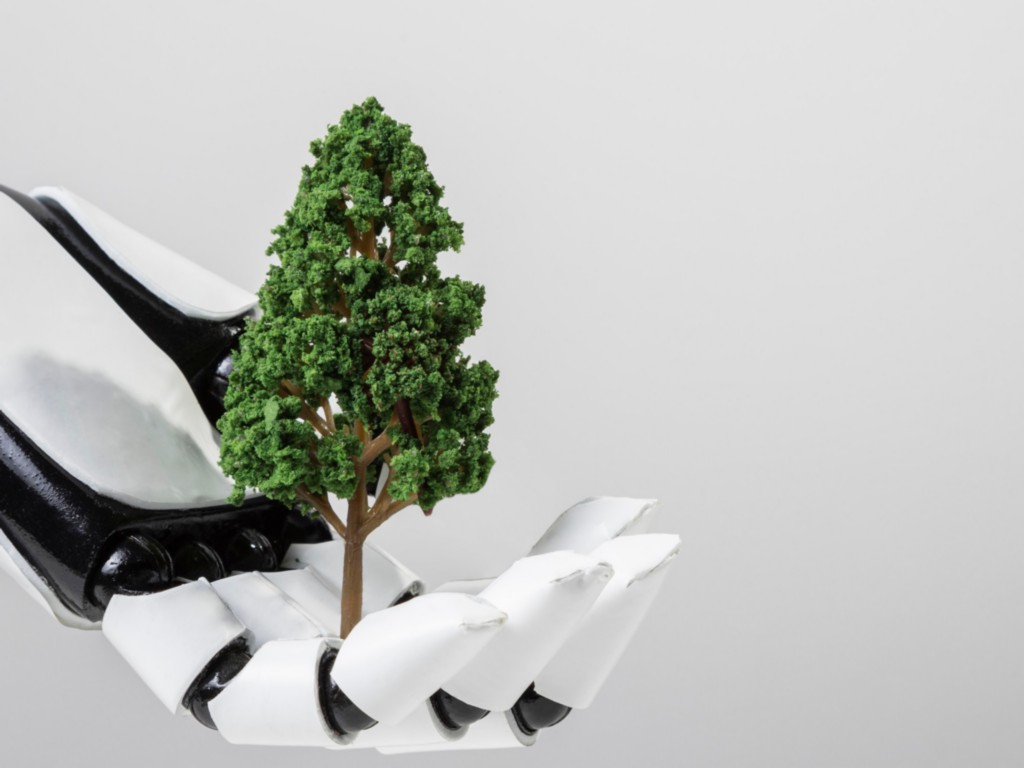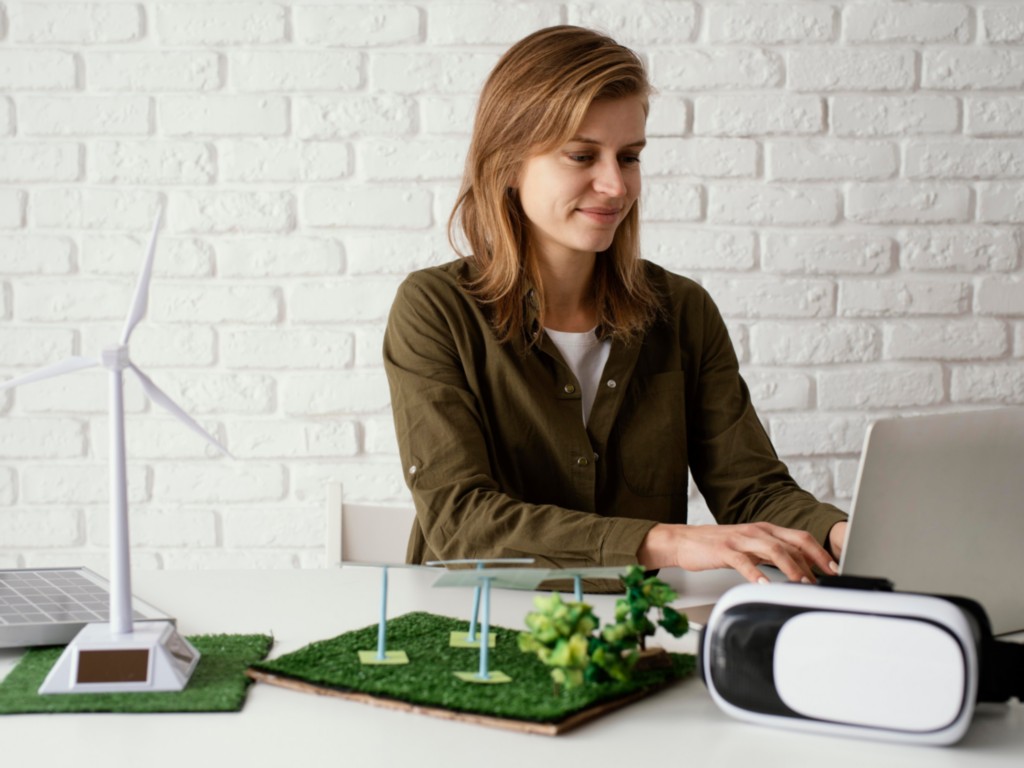The Role of Technology in Achieving Sustainable Living
In an era where environmental concerns are at the forefront of global discourse, the intersection of technology and sustainability has never been more critical. As we grapple with the pressing challenges of climate change, resource depletion, and ecological degradation, innovative technologies offer transformative solutions that can pave the way for a more sustainable future.
From smart home devices that optimize energy consumption to cutting-edge agricultural practices that minimize waste, technology is reshaping how we live, work, and interact with our environment. In this blog post, we will explore the myriad ways in which harnessing innovation can empower individuals and communities to adopt sustainable living practices.
Join us as we delve into the fascinating role of technology in promoting environmental stewardship, enhancing efficiency, and ultimately creating a harmonious balance between modern convenience and the planet’s well-being.
-
Introduction to Sustainable Living
Sustainable living is more than just a trend; it represents a profound shift in how we interact with our environment and resources. At its core, sustainable living is about making choices that reduce our ecological footprint, ensuring that we meet our current needs without compromising the ability of future generations to meet theirs. This philosophy encompasses a wide range of practices, from minimizing waste and conserving energy to embracing renewable resources and supporting local economies.
As the world grapples with pressing challenges such as climate change, resource depletion, and biodiversity loss, the importance of sustainable living has never been clearer. Individuals, communities, and businesses are increasingly recognizing that their actions have far-reaching consequences, prompting a collective movement towards more responsible consumption and lifestyle choices. From urban gardening and zero-waste initiatives to the use of eco-friendly products and energy-efficient technologies, sustainable living encourages us to rethink our habits and adopt a more holistic approach to our daily lives.
In this context, technology plays a pivotal role in facilitating sustainable living. Innovations such as smart home devices, renewable energy systems, and advanced recycling techniques empower individuals to reduce their environmental impact effectively. By harnessing the power of technology, we can not only optimize our resource use but also foster greater awareness and engagement in sustainability initiatives.
In the following sections, we will explore how various technological advancements are shaping the landscape of sustainable living, demonstrating the incredible potential for innovation to create a more sustainable future for all.
-
Understanding Innovation in Technology
Understanding innovation in technology is critical to grasping its transformative power in achieving sustainable living. At its core, innovation refers to the process of developing new ideas, products, or methods that significantly improve existing systems or address unmet needs. In the realm of sustainability, this often translates into leveraging advanced technologies to create solutions that minimize environmental impact while enhancing quality of life.
One of the most significant aspects of innovation in technology is its ability to optimize resource consumption. For instance, smart home devices now allow users to monitor and control energy usage in real-time, leading to reduced electricity bills and lower carbon footprints. Similarly, advancements in renewable energy technologies, such as solar panels and wind turbines, have made clean energy more accessible and affordable than ever before. These innovations not only provide sustainable alternatives to fossil fuels, but also empower individuals and communities to take charge of their energy consumption.
Moreover, innovation in technology fosters circular economies by promoting recycling and waste reduction. Companies are now utilizing groundbreaking materials and processes that enable products to be designed for longevity and repairability. For example, 3D printing technology allows for the creation of durable items from recycled materials, reducing the amount of waste that ends up in landfills. This shift not only conserves resources, but also encourages a culture of sustainability among consumers.
Additionally, data-driven technologies play a pivotal role in understanding and addressing environmental challenges. From precision agriculture that optimizes water and fertilizer used to smart city initiatives that improve urban management and reduce congestion, data analytics provide invaluable insights that drive sustainable decision-making. By harnessing the power of big data, communities can develop tailored strategies that enhance their resilience to climate change and promote sustainable practices.
In essence, understanding innovation in technology is about recognizing its potential to reshape our world for the better. By embracing these advancements, we can collectively work towards a more sustainable future, where technology acts as a catalyst for positive change and environmental stewardship.
-
The Interconnection Between Technology and Sustainability

The role of technology in achieving sustainable living
In today’s rapidly developing world, the interconnection between technology and sustainability has become increasingly apparent. As we grapple with the urgent challenges posed by climate change, resource depletion, and environmental degradation, technology emerges as a potent ally in the quest for sustainable living. This synergy is not merely a trend; it represents a fundamental shift in how we approach both innovation and environmental stewardship.
At its core, technology provides the tools and frameworks necessary for us to rethink traditional practices and create more efficient systems. For instance, advancements in renewable energy technologies, such as solar panels and wind turbines, are revolutionizing the way we generate power. By harnessing the natural elements, these technologies enable us to reduce our reliance on fossil fuels, thereby diminishing greenhouse gas emissions and promoting a cleaner planet.
Moreover, smart technology, including the Internet of Things (IoT), plays a pivotal role in enhancing energy efficiency in our homes and businesses. Smart thermostats and energy management systems allow consumers to monitor and optimize their energy usage in real-time, significantly reducing waste. These technologies not only save money but also empower individuals to make informed choices that contribute to a more sustainable lifestyle.
In agriculture, innovations such as precision farming and vertical gardens utilize technology to maximize crop yields while minimizing water usage and chemical inputs. Drones equipped with sensors can monitor crop health and soil conditions, allowing farmers to apply resources more judiciously. This not only conserves precious natural resources, but also leads to healthier food production practices.
Furthermore, the rise of sustainable transportation technologies like electric vehicles (EVs) and bike-sharing apps illustrates how technology can transform our mobility patterns. By promoting cleaner alternatives to traditional gasoline-powered cars, these innovations help reduce air pollution and lower carbon footprints, fostering a more sustainable urban landscape.
The interconnection between technology and sustainability is a dynamic and reciprocal relationship. Technology enables us to devise solutions that address environmental challenges, while sustainable practices drive innovation and inspire new technological advances. As we embrace this interconnected approach, we not only pave the way for a more sustainable future but also unlock the potential for a thriving economy that respects and nurtures our planet. Through thoughtful integration of technology and sustainable principles, we can create a harmonious balance that serves both humanity and the Earth.
-
Renewable Energy Solutions: Solar, Wind, and Beyond
As we navigate the complexities of climate change and dwindling natural resources, the role of renewable energy solutions has never been more critical. Harnessing the power of the sun, wind, and other natural forces offers a pathway toward sustainable living that not only reduces our carbon footprint but also empowers communities to take control of their energy needs.
**Solar Energy** stands at the forefront of this revolution. With advancements in photovoltaic technology, solar panels have become more efficient and affordable, allowing homeowners and businesses to generate their own electricity. From rooftop installations to vast solar farms, sunlight is being harnessed to power our homes, charge electric vehicles, and even support entire communities. Moreover, innovative storage solutions like lithium-ion batteries enable the capture of excess energy, ensuring that we can use solar power even when the sun isn’t shining.
**Wind Energy** is another powerhouse in the renewable arena. With massive wind turbines dotting the landscape, wind farms are now commonly seen as a symbol of sustainability. Advances in turbine design have led to increased efficiency and lower costs, making wind energy a competitive alternative to fossil fuels. Offshore wind farms are also gaining traction, capitalizing on the stronger and more consistent winds found over the ocean, further expanding the potential for clean energy generation.
But the conversation doesn’t stop at solar and wind. **Beyond these traditional solutions,** emerging technologies such as geothermal energy and tidal power are paving the way for even more diverse energy portfolios. Geothermal systems tap into the Earth’s internal heat, providing a reliable source of energy for heating and electricity generation. Meanwhile, tidal energy harnesses the predictable ebb and flow of ocean tides, presenting a virtually untapped source of clean power.
The integration of these renewable energy solutions is not merely about replacing traditional energy sources; it’s about creating a holistic approach to energy consumption. Smart grids, powered by innovative technologies, allow for real-time monitoring and management of energy use, ensuring that renewable sources are utilized to their fullest potential. Through energy efficiency measures, intelligent design, and grassroots initiatives, communities can reduce reliance on non-renewable resources while promoting a culture of sustainability.
In this age of innovation, embracing renewable energy solutions is not just a choice, it’s a necessity. By investing in and adopting these technologies, we can collectively work towards a sustainable future where clean energy is abundant, accessible, and integral to the way we live. Harnessing renewable energy is more than just a trend; it’s a commitment to ensuring that future generations inherit a healthier planet.
-
Smart Home: Enhancing Efficiency and Reducing Waste
In the quest for sustainable living, smart homes are emerging as a game-changing solution, seamlessly blending technology with eco-consciousness. By incorporating smart devices and systems, homeowners can significantly enhance energy efficiency and minimize waste, paving the way for a more sustainable lifestyle without sacrificing comfort or convenience.
Imagine a home that learns your habits and adjusts its energy consumption accordingly. Smart thermostats, for instance, can monitor your daily routines, automatically adjusting heating and cooling settings to optimize energy use when you’re away or asleep. This not only reduces energy waste but also lowers utility bills, making it a win-win for both the environment and your wallet.
Lighting is another area where smart technology shines. With smart lighting systems, you can control the intensity and color of your lights from your smartphone or through voice commands. These systems can be programmed to turn off lights in unoccupied rooms or dim them during certain hours, ensuring that no electricity is wasted. Additionally, integrating motion sensors helps automate lighting, only activating when someone is present, further enhancing energy savings.
Water conservation is also at the forefront of smart home innovation. Smart irrigation systems equipped with weather forecasting capabilities can adjust watering schedules based on recent rainfall or temperature changes, ensuring gardens and lawns receive the right amount of water without over-watering. This technology not only conserves water but also promotes healthier plants, contributing to a more sustainable ecosystem in your backyard.
Moreover, smart appliances, such as refrigerators and washing machines, are designed to operate more efficiently. They often provide real-time data on energy usage, allowing users to make informed decisions about their consumption patterns. Some appliances even have eco-friendly modes that optimize performance while minimizing resource use.
By harnessing these technologies, homeowners can create a holistic approach to sustainability. Smart homes are not just a trend; they represent a conscious effort to live in harmony with our environment. As we embrace these innovations, we take significant strides toward reducing our carbon footprint, conserving resources, and ultimately contributing to a healthier planet for future generations. In a world where every minor change counts, smart homes exemplify how technology can drive us closer to sustainable living while making our lives easier and more efficient.
-
Sustainable Agriculture: Technology’s Role in Food Production

Sustainable agriculture is at the forefront of addressing the pressing challenges posed by climate change, resource scarcity, and growing population demands. As the world grapples with the need to produce more food with fewer resources, technology emerges as a crucial ally in this effort. By harnessing innovative solutions, the agricultural sector can enhance productivity while minimizing environmental impact.
One of the most transformative technologies in sustainable agriculture is precision farming. Utilizing data analytics, GPS, and IoT devices, farmers can monitor field conditions in real-time, leading to more informed decision-making. This allows for precise application of water, fertilizers, and pesticides only where and when they are needed, significantly reducing waste and runoff, which protects soil and water quality.
Drones and satellite imagery are also revolutionizing crop management. These technologies enable farmers to assess crop health from above, identify pests, and even predict yields with remarkable accuracy. By providing detailed insights, farmers can implement targeted interventions that not only boost productivity but also promote biodiversity and soil health.
Moreover, advancements in biotechnology are paving the way for the development of resilient crop varieties that can withstand extreme weather conditions and resist pests without relying heavily on chemical inputs. This not only enhances food security, but also reduces the ecological footprint of farming practices.
Vertical farming and hydroponics are further examples of how technology can optimize space and resources. By growing crops in controlled environments, these methods use significantly less water and land compared to traditional farming. They also enable year-round production, reducing the need for long-distance transportation and its associated carbon emissions.
In conclusion, technology is a vital partner in the quest for sustainable agriculture. By integrating innovative tools and practices, we can create food systems that not only nourish our growing populations but also safeguard the planet for future generations. Embracing these advancements is not just an option; it’s a necessity for achieving a sustainable future in food production.
-
Water Conservation Technologies and Their Impact
Water conservation technologies are increasingly becoming essential tools in the quest for sustainable living. As the global population continues to rise and climate change exacerbates water scarcity issues, innovative solutions are emerging to help us use this vital resource more efficiently. From smart irrigation systems to advanced water filtration techniques, these technologies not only reduce waste but also ensure that clean, safe water is available for future generations.
One of the standout advancements in this field is smart irrigation, which leverages sensors and data analytics to optimize watering schedules based on real-time weather conditions and soil moisture levels. Homeowners and farmers alike can benefit from these systems, significantly reducing water usage while maintaining healthy gardens and crops. For instance, drip irrigation systems deliver water directly to the plant roots, minimizing evaporation and runoff, which can waste precious water resources.
In urban settings, grey water recycling systems are gaining traction. These systems collect and treat water from sinks, showers, and washing machines, allowing it to be reused for non-potable purposes such as irrigation and toilet flushing. By repurposing grey water, households can dramatically decrease their overall water consumption, often by up to 50%. This not only alleviates pressure on municipal water supplies, but also reduces the energy costs associated with water treatment and transportation.
Moreover, rainwater harvesting technologies are becoming more accessible, enabling individuals and communities to collect and store rainwater for later use. By installing rain barrels or sophisticated cistern systems, users can capture runoff from roofs and direct it to storage for irrigation or even household use, depending on local regulations and treatment capabilities. This practice not only helps mitigate flooding and erosion but also fosters a sense of self-sufficiency in water management.
The impact of these water conservation technologies extends beyond individual households; they contribute to larger-scale sustainability efforts by reducing the demand for water from natural sources and lowering the energy footprint associated with water treatment and distribution. As communities adopt these innovations, they foster a culture of conservation that encourages responsible water use and environmental stewardship.
In conclusion, water conservation technologies are not merely tools for reducing waste; they are pivotal in shaping a sustainable future. By integrating these innovations into our daily lives, we can significantly lessen our environmental impact, safeguard this essential resource, and set an example for future generations of the importance of living sustainably.
-
Waste Management Innovations: Recycling and Up cycling
In the quest for sustainable living, waste management innovations have emerged as a pivotal area where technology is making a significant impact. With the world generating billions of tons of waste annually, the need for effective recycling and up cycling methods has never been more pressing. Fortunately, advancements in technology are paving the way for smarter, more efficient solutions to tackle these challenges.
Automation and artificial intelligence has revolutionized recycling, once a labour-intensive process. Smart sorting facilities equipped with advanced robotics can now identify and separate various materials with remarkable precision. These innovations not only enhance the efficiency of recycling operations but also minimize contamination, ensuring that more materials are reclaimed and reintegrated into the manufacturing cycle. For example, AI-driven systems can analyse the composition of waste materials in real time, allowing for faster decision-making and reducing the need for human intervention.
Up cycling, on the other hand, is a creative approach that transforms waste into new products of higher value. Technology plays a vital role in this process as well. From 3D printing to clever design software, innovators are finding ways to repurpose discarded items into unique, functional pieces. For instance, old plastic bottles can be turned into stylish fashion accessories, while discarded wood can be transformed into stunning furniture. These sustainable practices not only reduce waste but also foster a culture of creativity and resourcefulness among consumers.
Moreover, digital platforms have emerged to support the up cycling movement by connecting creators with those looking to dispose of unwanted items. Online marketplaces and social media groups dedicated to up cycling allow individuals to share their projects, exchange materials, and inspire others to rethink their waste. This collaborative spirit not only promotes sustainable practices, but also helps build strong community ties.
As we navigate the complexities of modern living, embracing waste management innovations through recycling and up cycling is essential for fostering a sustainable future. By leveraging technology to optimize these processes, we can reduce our environmental footprint, conserve valuable resources, and inspire a new generation of eco-conscious individuals who prioritize sustainability in their everyday lives.
-
Transportation Advances: Electric Vehicles and Public Transit Solutions
Transportation plays a pivotal role in our daily lives, yet it is also one of the largest contributors to carbon emissions. As we strive for sustainable living, innovative technology is stepping in to reshape how we think about moving from point A to point B. The rise of electric vehicles (EVs) and enhanced public transit solutions are at the forefront of this transportation revolution.
Electric vehicles are no longer a niche market; they have become a mainstream option for consumers looking to reduce their carbon footprint. With advancements in battery technology, EVs now offer longer ranges and faster charging times, making them a practical choice for everyday use. Major automotive manufacturers are investing heavily in electric models, ensuring that consumers have an array of choices. From compact cars to spacious SUVs, the options are plentiful, and many consumers are drawn to the idea of driving a vehicle that produces zero tailpipe emissions. Moreover, the availability of incentives and rebates for EV purchases further encourages adoption, fostering a culture that prioritizes sustainability.
However, while individual electric vehicles contribute to reducing emissions, the impact is magnified when paired with robust public transit solutions. Cities around the globe are increasingly investing in modern, efficient public transportation systems such as electric buses, light rail, and subways. These initiatives not only reduce the number of single-occupancy vehicles on the road but also provide accessible options for all community members, promoting inclusivity and reducing traffic congestion.
Additionally, advancements in technology are revolutionizing public transit by integrating real-time data and smart technology. Mobile apps allow passengers to track buses and trains, purchase tickets, and receive updates on delays, making public transport a more appealing alternative to driving. Innovations like bike-share programs and electric scooters complement traditional transit systems, offering last-mile solutions that encourage even more people to leave their cars at home.
By embracing electric vehicles and investing in sustainable public transit solutions, communities can significantly reduce their environmental impact while improving overall quality of life. The synergy between these technologies not only leads to cleaner air and reduced greenhouse gas emissions but also fosters healthier, more connected communities where sustainable living is not just an aspiration, but a tangible reality.
-
The Internet of Things (IoT) for Sustainable Living
The Internet of Things (IoT) is revolutionizing the way we interact with our environment, providing innovative solutions that pave the way for sustainable living. Imagine a world where your home, car, and even your appliances communicate seamlessly, all working together to reduce energy consumption and minimize waste. This vision is becoming a reality through the power of IoT technology.
At its core, IoT connects everyday devices to the internet, enabling them to collect and exchange data. In a sustainable living context, this connectivity can lead to significant improvements in resource management. For instance, smart thermostats learn your heating and cooling preferences, adjusting temperatures automatically to save energy when you’re not home. Similarly, smart irrigation systems monitor soil moisture levels and weather conditions, optimizing water usage for gardens and landscapes, thus conserving precious water resources.
But the benefits of IoT extend beyond individual homes. In urban areas, smart sensors can analyse traffic patterns and adjust traffic lights in real time, reducing congestion and lowering emissions. Waste management systems equipped with IoT devices can notify collection services when bins are full, ensuring timely pickups and reducing unnecessary trips that contribute to pollution.
Additionally, IoT can foster a greater sense of community and collaboration. Neighbourhoods can utilize shared platforms to monitor and manage local resources collectively, from energy usage to community gardens. By sharing insights and data, residents can make informed decisions that benefit both their households and the environment.
As we harness the capabilities of IoT for sustainable living, we not only enhance our everyday lives but also contribute to a larger movement towards environmental conservation and sustainable practices. With each connected device, we take a step closer to a future where technology and sustainability go hand in hand, creating a harmonious relationship between humanity and our planet.
-
Eco-Friendly Materials and Construction Technologies

In the quest for sustainable living, the choice of materials and construction technologies plays a pivotal role in reducing our ecological footprint. Eco-friendly materials, often sourced from renewable resources, are designed to minimize environmental impact while providing the durability and functionality required in modern construction. From bamboo and reclaimed wood to recycled steel and low-VOC (volatile organic compound) paints, these materials not only enhance the aesthetic appeal of our living spaces but also contribute to healthier indoor environments.
Advancements in construction technologies further amplify the benefits of using eco-friendly materials. Innovative techniques such as prefabrication and modular construction allow for greater efficiency, reducing waste and energy consumption during the building process. These methods streamline the assembly of structures, ensuring that less material ends up in landfills and that construction timelines are shortened. Additionally, technologies like 3D printing are revolutionizing the way we think about building materials, enabling the creation of complex designs using sustainable resources that can be produced on-demand.
Moreover, integrating smart technologies into construction enhances energy efficiency and sustainability. For instance, the use of energy monitoring systems and smart thermostats helps inhabitants optimize their energy consumption, ensuring that homes are not only built sustainably but also operated in an eco-friendly manner. Solar panels, green roofs, and rainwater harvesting systems can be seamlessly incorporated into modern designs, further solidifying the connection between technology and sustainable living.
By choosing eco-friendly materials and embracing innovative construction technologies, we can create homes and buildings that are not only environmentally responsible but also architecturally stunning. This holistic approach to building ensures that we protect our planet for future generations while enjoying the comforts of modern living today. Emphasizing sustainability in construction is not just a trend; it is a necessity for fostering a healthier planet and a thriving future.
-
Case Studies: Successful Examples of Technology in Action
In our journey towards sustainable living, numerous innovative technologies have emerged, demonstrating their potential to reshape our habits and the environment for the better. These case studies highlight successful implementations of technology in various sectors, offering tangible proof that sustainability is not just an ideal but an achievable reality.
One standout example is **SolarCity**, a company that has revolutionized the way homeowners access solar energy. By providing affordable solar panel installations and a unique leasing model, SolarCity has made renewable energy accessible to a wider audience. Their technology not only reduces reliance on fossil fue
ls but also empowers homeowners to contribute to a cleaner planet. Through smart home integration, customers can monitor their energy consumption and efficiency in real-time, making informed decisions that further promote sustainability.
Another inspiring case is **The Ocean Cleanup**, a project dedicated to tackling the growing problem of ocean plastic pollution. Utilizing advanced technologies such as autonomous floating barriers and artificial intelligence, The Ocean Cleanup has developed innovative systems to capture and remove plastic debris from the oceans. Their pilot projects have already demonstrated significant reductions in plastic waste, showcasing how technology can drive environmental restoration while raising global awareness of marine pollution.
In the agricultural sector, **Agri-Tech startups** are harnessing cutting-edge technology to promote sustainable farming practices. Companies like **AeroFarms** are utilizing vertical farming techniques combined with hydroponics and smart sensors to grow crops in controlled environments, significantly reducing water usage and eliminating the need for pesticides. These innovations not only increase crop yield but also lessen the environmental impact of traditional farming methods, paving the way for a more sustainable food supply chain.
Finally, **smart grid technology** is transforming energy distribution and consumption. By integrating advanced metering infrastructure with renewable energy sources, cities can optimize energy use and reduce waste. Projects like **Grid Edge** in the UK employ data analytics and AI to help businesses and homeowners make energy-efficient choices, ultimately lowering carbon footprints while saving on energy costs.
These case studies exemplify how technology can be a catalyst for sustainable living. By learning from these successful implementations, we can all harness innovation to create a more sustainable future, proving that with the right tools and commitment, a greener world is not just a dream but a viable path forward.
-
Challenges and Barriers to Implementing Sustainable Technologies
While the promise of sustainable technologies is enticing, the journey toward their widespread implementation is fraught with challenges and barriers that must be navigated carefully. One significant hurdle is the high initial cost of adopting new technologies. Many sustainable solutions, such as solar panels, energy-efficient appliances, and electric vehicles, often require substantial upfront investments that can deter both individuals and businesses from making the switch. This financial barrier is particularly challenging for low-income households and small enterprises, which may struggle to secure the necessary funding or credit.
Additionally, there is a pressing need for infrastructure that supports sustainable innovations. In many regions, outdated grids and inadequate public transportation systems can hinder the effective deployment of renewable energy sources or electric vehicles. Without the necessary infrastructure in place, even the most innovative technologies may fail to reach their full potential, leaving communities at a disadvantage.
Public awareness and understanding of sustainable technologies also play a critical role in their adoption. Many consumers remain hesitant to embrace new products or practices because of a lack of information or misconceptions about their efficacy. Educational initiatives are essential for dispelling myths and highlighting the long-term benefits of sustainable living, but implementing these programs requires time and resources.
Furthermore, regulatory challenges can complicate the adoption of sustainable technologies. Policies may lag behind advancements, creating a disconnect between innovation and regulation. Inconsistent regulations across regions can also create confusion and discourage companies from investing in sustainable practices.
Finally, cultural attitudes and behaviours can pose barriers as well. Change can be uncomfortable, and many individuals may resist altering their habits or lifestyle choices, even in the face of overwhelming evidence supporting the need for sustainability. Overcoming this inertia requires targeted outreach, community engagement, and a commitment to demonstrating the tangible benefits of sustainable living.
In summary, while the road to sustainable living through technology is promising, it is essential to acknowledge and address the myriad challenges and barriers that stand in the way. By fostering collaboration among governments, businesses, and communities, we can work together to create a more sustainable future.
-
The Future of Sustainable Living: Trends to Watch
As we stand on the brink of a new era in sustainable living, several key trends are emerging that promise to shape our environmental future. These trends not only highlight the role of innovation and technology but also reflect a growing consciousness among consumers and businesses alike.
**1. Smart Home Technology**: The integration of smart technology into our homes is revolutionizing energy efficiency. Devices such as smart thermostats, energy-efficient appliances, and smart lighting systems are becoming commonplace, allowing homeowners to monitor and optimize their energy usage in real time. These technologies not only reduce carbon footprints but also empower consumers to make informed decisions about their energy consumption.
**2. Renewable Energy Adoption**: The shift toward renewable energy sources, such as solar and wind power, is gaining momentum. Innovations in battery storage technology are making it easier for individuals and businesses to harness and store energy produced from these renewable sources. As solar panels become more affordable and efficient, the concept of energy independence is becoming a reality for many.
**3. Sustainable Transportation**: From electric vehicles (EVs) to shared mobility solutions, the transportation sector is undergoing a significant transformation. With advancements in battery technology and infrastructure, EVs are becoming more accessible, encouraging a shift away from fossil fuel-dependent vehicles. Furthermore, the rise of bike-sharing programs and public transportation apps are promoting a more sustainable approach to urban mobility.
**4. Circular Economy Practices**: The idea of a circular economy where waste is minimized, and products are designed for reuse and recycling is gaining traction. Companies are increasingly adopting sustainable manufacturing processes, focusing on creating products that are not only environmentally friendly but also economically viable. Innovations such as biodegradable materials and upcycling are reshaping the way we think about consumption and waste.
**5. Agricultural Technology (AgTech)**: Advances in AgTech are transforming the agricultural landscape, promoting sustainable practices that reduce environmental impact. Precision farming technologies, such as drones and IoT sensors, are enabling farmers to utilize resources more efficiently, minimize waste, and enhance crop yields. These innovations are essential in addressing food security while ensuring the health of our planet.
**6. Eco-conscious Consumerism**: Lastly, consumers are becoming more discerning, demanding transparency and sustainability from brands. This shift in consumer behavior is prompting businesses to prioritize eco-friendly practices in their operations and marketing. Companies that embrace sustainability as part of their core values are not only resonating with customers but also positioning themselves for long-term success.
As we look ahead, these trends underscore the pivotal role of technology in fostering a sustainable future. By harnessing innovation, we can create a world where sustainable living is not just a goal but a way of life, ensuring the health of our planet for generations to come. Embracing these changes is not merely an option; it is a necessity for those who wish to thrive in an increasingly eco-conscious marketplace.
-
Conclusion: Embracing Innovation for a Greener Tomorrow
In conclusion, embracing innovation is not just a choice; it’s a necessity for paving the way toward a greener tomorrow. As we stand at the crossroads of environmental challenges and technological advancements, the potential for positive change has never been more significant. By harnessing cutting-edge technologies, whether through renewable energy solutions, smart agriculture practices, or sustainable materials, we can mitigate our impact on the planet while enhancing our quality of life.
The journey toward sustainable living is a collective effort that requires collaboration among individuals, businesses, and governments. Each entity plays a vital role in driving forward innovative practices that respect our natural resources and promote ecological balance. As consumers, we have the power to make informed choices, supporting brands and technologies that prioritize sustainability. Meanwhile, businesses must commit to integrating innovative solutions into their operations, ensuring that their growth aligns with environmental stewardship.
Ultimately, the innovations we choose to embrace today will define the legacy we leave for future generations. By investing in technology and fostering a culture of sustainability, we can create resilient communities that thrive in harmony with nature. The path to sustainability may be complex, but with determination and ingenuity, we can turn the tide and build a brighter, greener future for all. Together, let us take this crucial step forward and champion innovation as the cornerstone of sustainable living, ensuring that our planet remains vibrant and viable for years to come.
In conclusion, harnessing innovation through technology is not just a trend but a crucial pathway toward achieving sustainable living for our planet. As we’ve explored, the integration of smart solutions from renewable energy systems and sustainable agriculture practices to eco-friendly transportation and waste reduction technologies can significantly enhance our efforts to create a greener future.
By embracing these innovations, we not only reduce our environmental impact, but also inspire communities to adopt more sustainable practices. The journey toward sustainability is ongoing, and with each technological advancement, we move closer to a harmonious balance between modern living and the preservation of our natural resources.
Let’s take these insights to heart, champion innovative solutions, and collectively work towards a sustainable world that future generations can enjoy. Thank you for joining us in this exploration of technology’s vital role in fostering a sustainable lifestyle!















1 comment